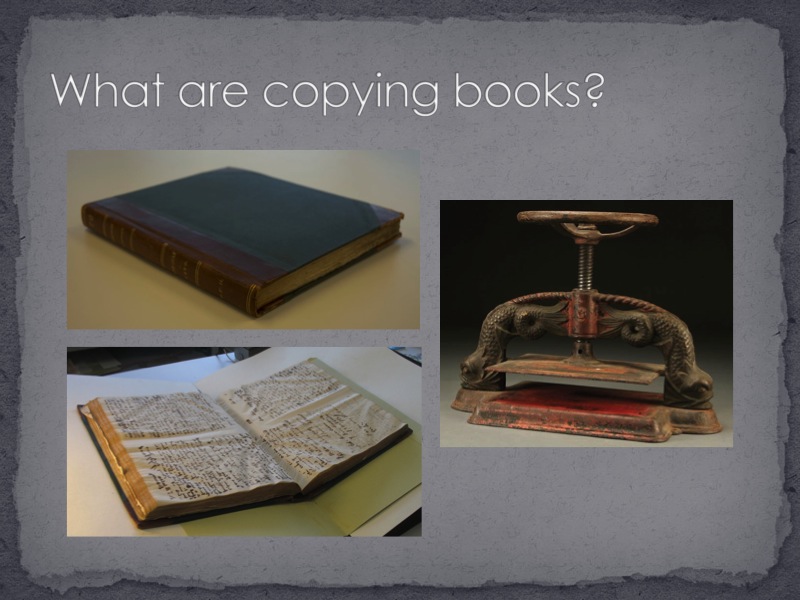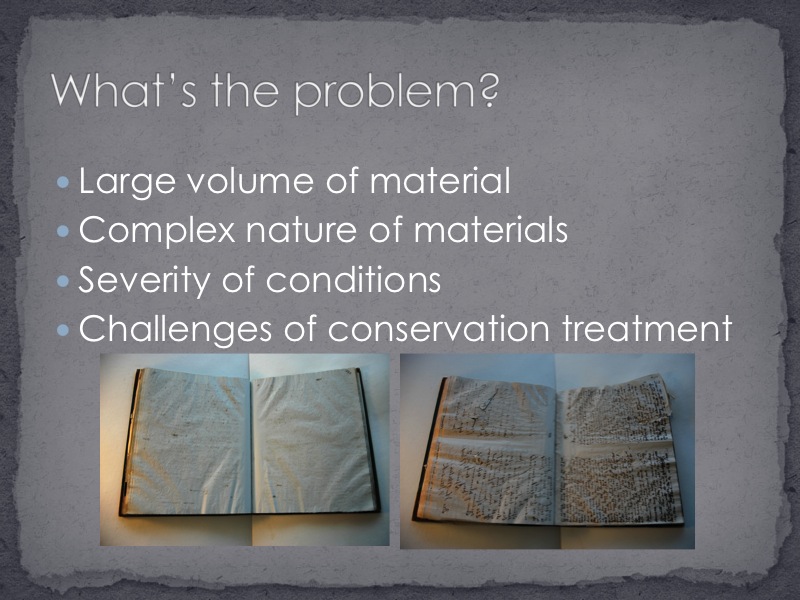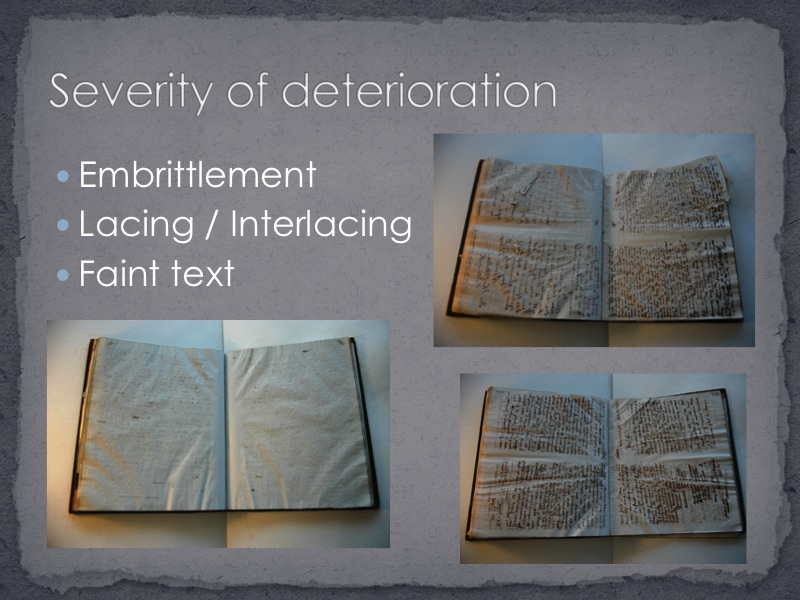Research
The Conservation of Letterpress Copying Books:
A Study of the Baird Collection, A Progress Report
Presentation Slides
Click thumbnails to view images.
Abstract
This study investigates the conservation treatment options to preserve the treasured Smithsonian collection of letterpress copying books handwritten by Spencer Fullerton Baird (1823-1887), the second Assistant Secretary for the Smithsonian Institution. Housed in the Smithsonian Institution Archives, the Baird copying books comprise eighty volumes of outgoing correspondence (1850-1877) including approximately 32,000 leaves bound in quarter-leather cloth bindings. The letters document, not only the history of the Smithsonian Institution, but also the growing fields of museology and natural history in the mid-nineteenth century. This unique primary source provides an irreplaceable window into a formative period of the history of the nation. The copying books are currently unavailable to researchers due to their severely deteriorated condition. The fragile paper exhibits conditions such as fading inks, offsetting, feathering, embrittlement, and letter drop-out or lacing, which are symptomatic of advanced iron gall ink corrosion and are commonly found in copying books.
The historic copy press process involved the transfer of ink on a freshly written document to a moistened sheet of copy paper through the use of direct contact and pressure. Because the soluble copying ink was transferred directly, it left a mirror image print to be read from the verso of the thin paper. The process required inks and papers to have certain properties to be effective. It was necessary for the ink to remain wet for an extended period in order to achieve multiple high quality copies without causing unacceptable damage to the original. The paper had to be thin enough to read through the verso of the sheet, but also had to be strong enough to withstand the strains of being handled wet and pressed repeatedly. These parameters led to the experimentation and development of many different formulations of ink and papers1. These unusual papers and inks create special challenges for conservation treatment. Because the inks and papers used are unique to copying books, their preservation needs are likewise unique.
This study employs analytical techniques to investigate the complex nature of the materials, explores and evaluates treatment options with experimental procedures using artificially aged samples, and investigates best practices for the digitization of the materials. The use of analytical techniques compliments previous historical research by verifying as well as challenging the claims of marketing materials and patents, and by further differentiating the composition of the inks and papers from traditional writing materials. The experimental treatments will lead to a treatment decision tree, which will act as a guide for conservators and archivists in treatment planning and prioritization. The digitization exploration will result in a best practice procedure, which will employ inexpensive and accessible equipment to gain high quality images requiring minimal processing time.



















